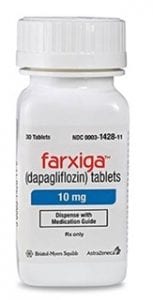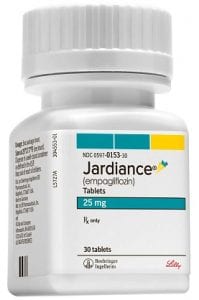The FDA issued a warning about sodium-glucose cotransporter-2 (SGLT2) inhibitors, drugs commonly prescribed for treating type 2 diabetes. These drugs were linked, over a five-year period, to a dozen rare cases of genital infection known as Fournier’s gangrene or necrotizing fasciitis. This potentially lethal malady causes the skin to die. All 12 patients who developed it required hospitalization, according to the FDA. One person died.
SGLT2 Inhibitors linked to Flesh-eating Bacteria
The SGLT2 inhibitors have been linked to cases of a flesh-eating bacterial infection that attacks the perineum, the skin between the anus and the vulva or the anus and the scrotum. An infection of the perineum affecting this part of the body is called Fournier’s gangrene. It is a rare but potentially fatal condition.
Fournier’s gangrene is more common in men than women. It can spread to other parts of the body, according to medical experts. It can also rapidly progress to involve the entire genital area, and even infect the abdominal wall.
 The 12 cases of this infection that the FDA saw spurned the agency into requiring that all SGLT2 inhibitors now include a warning about this risk in the prescribing information. The medications in this class include canagliflozin (Invokana & Invokamet), dapagliflozin (Farxiga), empagliflozin (jardiance) and ertugliflozin (Steglatro). The drugs are available as single-ingredient medications or in combinations, such as with metformin.
The 12 cases of this infection that the FDA saw spurned the agency into requiring that all SGLT2 inhibitors now include a warning about this risk in the prescribing information. The medications in this class include canagliflozin (Invokana & Invokamet), dapagliflozin (Farxiga), empagliflozin (jardiance) and ertugliflozin (Steglatro). The drugs are available as single-ingredient medications or in combinations, such as with metformin.How do these infections occur?
Type 2 diabetes occurs when the body can’t remove sugar from the bloodstream. In a diabetic, the cells fail to respond to insulin, the hormone that helps move sugar into the cells. SGLT2 inhibitors can help lower blood sugar by causing the kidneys to remove sugar from the body through urine. This process can stabilize blood sugar levels.
Unfortunately, this process can also lead to infections, because anywhere there is higher blood sugar, there’s an increased risk of bacterial infection. Bacteria is all over us, and a sugary environment is a great breeding ground for bacteria. When one eliminates more sugar through urine, a greater concentration of bacteria reaches into the genital area. This area then becomes an inviting environment for bacteria.
Bacteria can become a problem only when there is an entry point to infect, such as a small cut from shaving or a skin ulcer near the genitals. When that happens, the infections can become serious and require many surgeries to remove all of the infected tissues, which is exactly what happened to the 12 people in the FDA report which led to the newly required warnings.
How Diabetes Drugs cause Dangerous Genital Infections
The FDA warning includes instructions for any patients taking these drugs to seek immediate medical attention if they experience any signs of swelling, itching or irritation in the genital area, or if they experience a fever above 100.4 degrees Fahrenheit (38 degrees Celsius). The bacteria that can cause necrotizing fasciitis can spread quickly, so it’s vital to seek immediate treatment at any sign of infection and a general feeling of ill being.
Type 2 Diabetes Treatment Options Exist
SGLT2 inhibitors are not the only game in town for those who suffer from Type 2 diabetes. Good hygiene can help minimize the risk of necrotizing fasciitis, and Type 2 diabetes can be controlled in ways which don’t involve taking SGLT2 inhibitors.
 Related
Related
- Diabetes Drugs cause Gangrene
- Diabetes Drugs Gangrene Lawsuit

by Matthews & Associates




